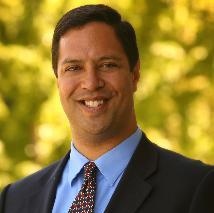The Legislature’s public school funding interim committee got another taste Monday of how difficult it will be to transition to an enrollment-based funding model.
Last month, the committee recommended that Idaho abandon the average daily attendance-based funding model and create an enrollment-based model.
The difference might sound like semantics, but budget and policy experts told committee members the change won’t be easy, or necessarily free.
Public school funding is the state’s largest general fund expense. The 2017 Legislature appropriated about $1.7 billion to distribute among Idaho’s public and charter schools.
With about 300,000 students in the system, that’s complicated enough. But policymakers would likely need to repeal or amend several state laws to facilitate the funding change.
State laws addressing or defining average daily attendance calculations, support units, staff allowances, education support programs and more could require retooling.
State officials would also need to define “full-time enrollment” and overload enrollment.
They also must consider online courses, dual enrollment, fractional enrollment and student mobility issues that arise when students move from one school to another during the same year.
Other questions arise as well.
- How and when would school officials calculate enrollment?
- Would school officials validate and reconcile enrollment counts?
- Would they add in additional weighting factors to financially support at-risk or special needs students?
Tim Hill, the State Department of Education’s deputy superintendent for school finance, said last year’s average attendance came in at about 95 percent.
Generally speaking, that means a school with enrollment of 42 students would have been paid based on attendance of 40 students.
It would cost the state about $71 million to avoid dividing new funding levels by that 95 percent attendance figure.
Furthermore, a straight shift to enrollment-based funding would affect schools differently — depending on whether attendance was above 95 percent or below 95 percent.
“Moving to enrollment-based funding in a revenue-neutral way will generate some unintended consequences,” Hill said.
Committee members also debated whether they should transition slowly from attendance to enrollment, or do it all at once.

“I think, personally, it would be very confusing to do this in a series of transitional steps,” State Board of Education President Linda Clark said. “My preference is to pick a date certain to move to a new system.”
Although the change won’t be easy, teacher and Garden City Democratic Rep. John McCrostie said it is important to move to a student-based funding system.
“Improving Idaho’s educational outcomes may be the most important thing we do as legislators,” McCrostie said in a written statement. “We have fallen so far behind in terms of education and it’s having a terrible effect on our state’s prosperity.”
The committee will meet at least one more time before the 2018 Legislature convenes. That meeting is set for Nov. 13.
